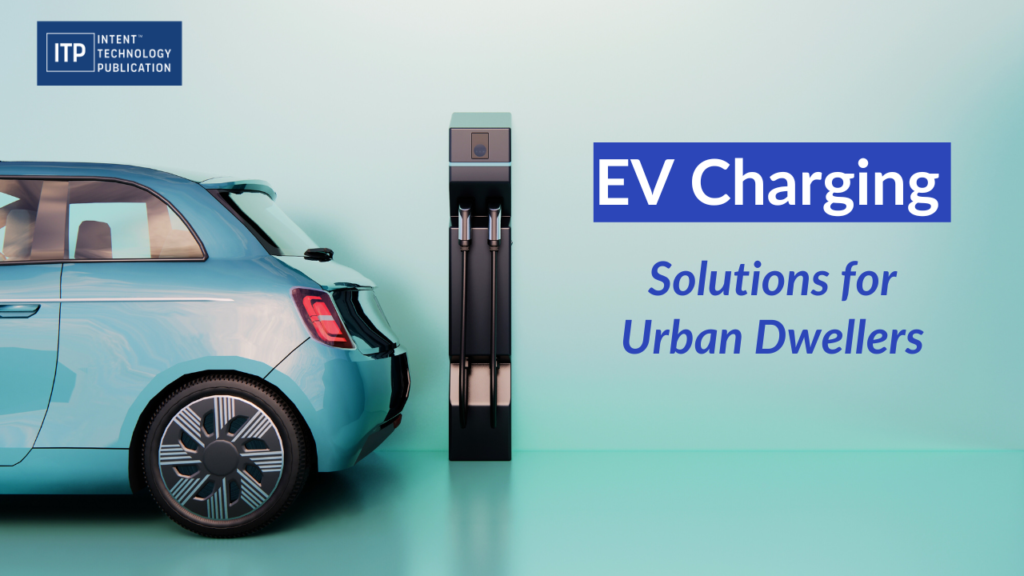As urban areas embrace the EV charging solution, the challenge of convenient and accessible charging solutions becomes paramount. In this blog, we delve into five key solutions tailored to urban dwellers, revolutionizing the way EVs integrate into city landscapes.
1. Installing EV Charging Stations in Fossil Fuel Pumps

Retrofitting traditional gas stations with Electric Vehicle charging solution infrastructure is a pragmatic approach. Converting these spaces into dual-purpose hubs offers convenience and accessibility for urban EV owners. Access to charging points at familiar locations reduces range anxiety, making EV ownership more feasible in cities.
Pros:
- Convenience: Dual-purpose stations enhance convenience by integrating charging points into familiar gas stations.
- Accessibility: Retrofitting gas stations makes charging more accessible, particularly in urban areas where space is limited.
- Addressing Range Anxiety: Streamlined access to charging points helps alleviate concerns about EVs’ limited range, encouraging more people to consider EV ownership.
- Existing Infrastructure: Utilizing existing spaces reduces the need for new construction, promoting cost-effectiveness and faster implementation.
Cons:
- Space Limitations: Retrofitting existing gas stations may pose space constraints, limiting the number of charging points or accessibility during peak times.
- Upfront Investment: Initial retrofitting costs and equipment installation could be significant, requiring investment and planning.
- Compatibility Challenges: Different EV models may have varying charging requirements, necessitating multiple charging options, and potentially complicating retrofitting efforts.
- Dependence on Existing Locations: The distribution and availability of charging stations depend on the locations of traditional gas stations, potentially limiting coverage in some areas.
2. Installing Solar Panels in Residential Areas

Leveraging solar power at the local level profoundly alters urban charging dynamics. Equipping residential buildings with solar panels offers sustainable energy for households and serves as a catalyst for EV charging solutions. This decentralized strategy fosters self-reliance, diminishing reliance on centralized grids and fostering eco-conscious energy consumption.
Pros:
- Sustainable Power Source: Solar panels provide renewable and sustainable energy for residences, reducing reliance on non-renewable resources.
- EV Charging Convenience: Solar-equipped homes offer convenient EV charging solutions for electric vehicles, enhancing accessibility for urban EV owners.
- Self-Sufficiency: Encourages independence from centralized grids, ensuring uninterrupted power supply even during grid disruptions.
- Environmental Benefits: Promotes eco-friendly energy usage, reducing carbon footprint and contributing to a cleaner environment.
- Cost Savings: Long-term financial benefits through reduced electricity bills and potential incentives for renewable energy usage.
Cons:
- Initial Cost: Installation expenses for solar panels might be high, deterring some from adopting this technology.
- Weather Dependency: Solar power generation can be affected by weather conditions, potentially impacting consistent energy supply.
- Space Requirement: Adequate rooftop space or land area is necessary for effective solar panel installation.
- Storage Challenges: Storing excess energy for later use might require additional equipment, adding to the overall cost.
- Maintenance: Periodic maintenance and cleaning of solar panels are essential for optimal performance, incurring additional efforts and costs.
3. Battery Swapping: An Efficient Alternative

Battery swapping emerges as a novel urban EV charging solution, offering swift battery exchanges at dedicated stations. Its primary advantage lies in bypassing prolonged charging waits, ideal for urbanites living in a fast-paced environment. This rapid process eradicates charging downtime, guaranteeing uninterrupted EV usage—a significant boon for those in constant motion within cities.
Pros:
Battery swapping offers a rapid and hassle-free solution for urban EV charging. Dedicated stations facilitate swift battery exchanges, sidestepping prolonged charging waits, ideal for the bustling urban lifestyle. This process eradicates charging downtime, ensuring uninterrupted EV usage, a boon for active city residents. The convenience of immediate battery replacements aligns with the on-the-go nature of urban life, significantly reducing the time spent on charging compared to traditional plug-in methods. Moreover, it contributes to addressing range anxiety and enhancing EV usability in cities.
Cons:
However, battery swapping faces challenges such as infrastructure development costs and standardization issues. Establishing widespread swapping stations requires substantial investment, potentially slowing down the implementation process. Additionally, compatibility concerns arise with varying battery types among EV models, necessitating standardized designs for effective swapping. Limited availability of swapping stations might also hinder accessibility, especially in regions lacking infrastructure. Furthermore, concerns regarding the quality and condition of swapped batteries might arise, impacting user trust and safety. Despite its convenience, addressing these hurdles is crucial for the widespread adoption of battery swapping as a reliable urban EV charging solution.
4. Rooftop Solar Panels on Vehicles

The integration of solar panels onto EV rooftops signifies a revolutionary approach to charging. This mobile EV charging solution optimizes available sunlight, bolstering the vehicle’s battery whether stationary or on the go. By utilizing previously unused space, it introduces a sustainable charging option for urban EV owners.
Pros:
- Sustainability: Utilizes renewable energy sources, reducing dependency on conventional grids.
- Continuous Charging: Offers a consistent charging source, regardless of parking or driving.
- Space Efficiency: Maximizes vehicle surface area, making use of otherwise vacant space.
- Environmental Impact: Decreases carbon footprint by harnessing clean, solar energy.
- Convenience: Provides an autonomous charging method without requiring external infrastructure.
Cons:
- Efficiency: Limited surface area may restrict the amount of energy generated, affecting charging capacity.
- Cost: Initial installation expenses and the efficiency-to-cost ratio may pose financial barriers.
- Practicality: May not fully charge the vehicle due to limited exposure to sunlight during certain conditions.
- Aesthetics: Alters the vehicle’s appearance, potentially affecting its design and aesthetics.
- Durability: Susceptibility to damage or wear could impact panel efficiency and longevity.
5. Leveraging Regenerative Braking

Regenerative braking technology is a standout urban EV charging solution, capturing kinetic energy from braking and converting it into stored electrical power for the vehicle’s battery. This innovative system significantly boosts EV efficiency, particularly in bustling cityscapes with constant stop-and-go traffic patterns. By reclaiming energy during braking moments, it enhances the overall performance of electric vehicles, contributing to extended driving range and reduced reliance on external charging sources.
Pros:
- Efficiency Boost: Recapturing energy enhances the vehicle’s overall efficiency, maximizing the use of kinetic energy that would otherwise be lost.
- Extended Range: The additional power harvested through regenerative braking extends the vehicle’s driving range, particularly advantageous in urban settings.
- Reduced Dependency: Less reliance on traditional charging methods as the system contributes to replenishing the battery during routine braking.
- Environmental Impact: This technology aligns with sustainable practices by utilizing otherwise wasted energy, reducing the vehicle’s carbon footprint.
Cons:
- Limited Effectiveness: Regenerative braking might not yield significant power gains in scenarios with minimal braking opportunities or at high speeds.
- Cost and Implementation: Initial setup costs and technical complexities for integrating this system might pose barriers to widespread adoption.
- Adaptation Challenges: Drivers might need time to adjust their driving habits to maximize the benefits of regenerative braking, affecting its immediate effectiveness.
Conclusion
As urban landscapes adapt to the EV era, diverse EV charging solutions emerge, catering to the specific needs of city dwellers. The integration of charging infrastructure into existing spaces, harnessing solar energy, and exploring innovative technologies like battery swapping and regenerative braking all contribute to a sustainable, user-friendly urban EV ecosystem. The fusion of these solutions not only addresses convenience but also accelerates the urban adoption of electric vehicles, heralding a cleaner and more efficient transportation landscape.


